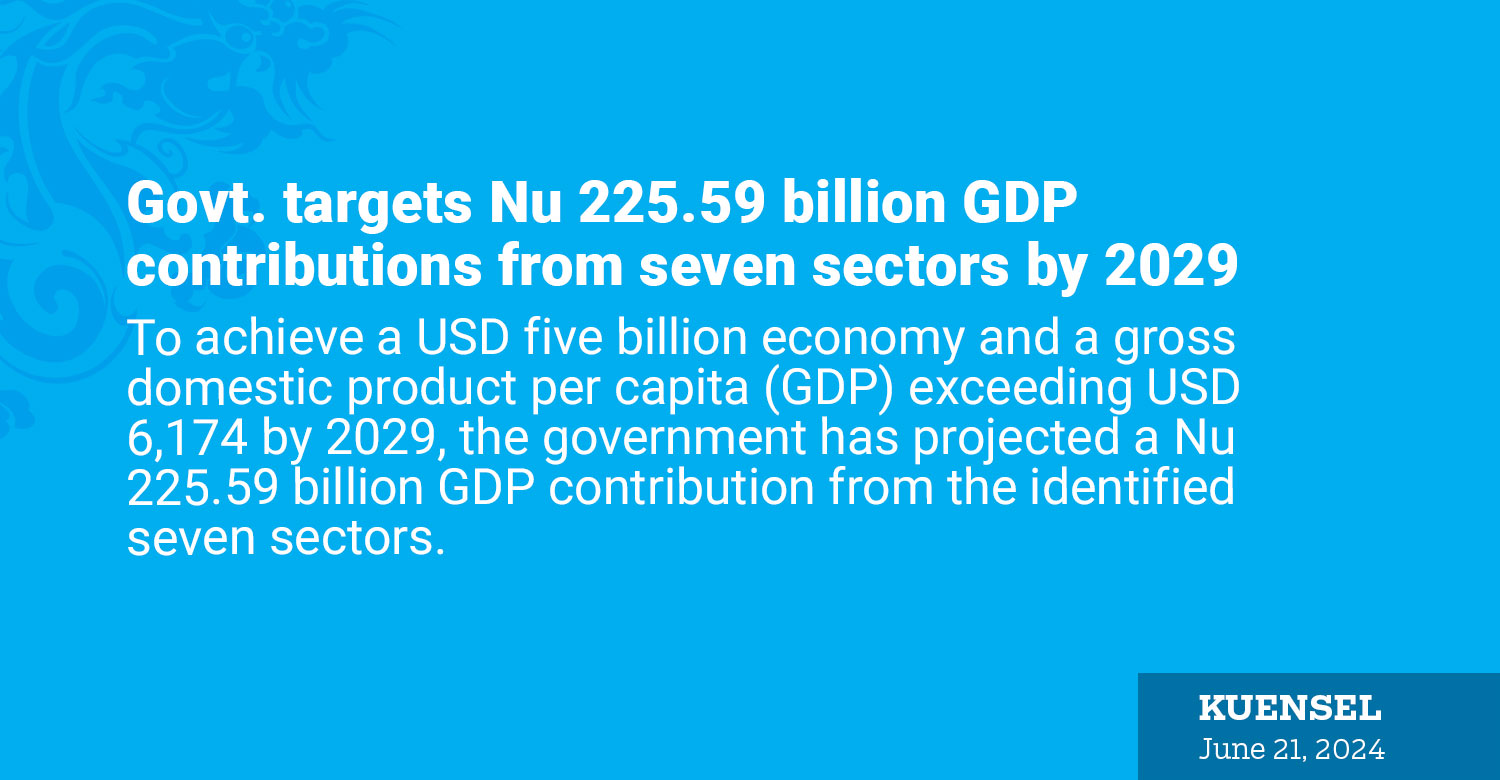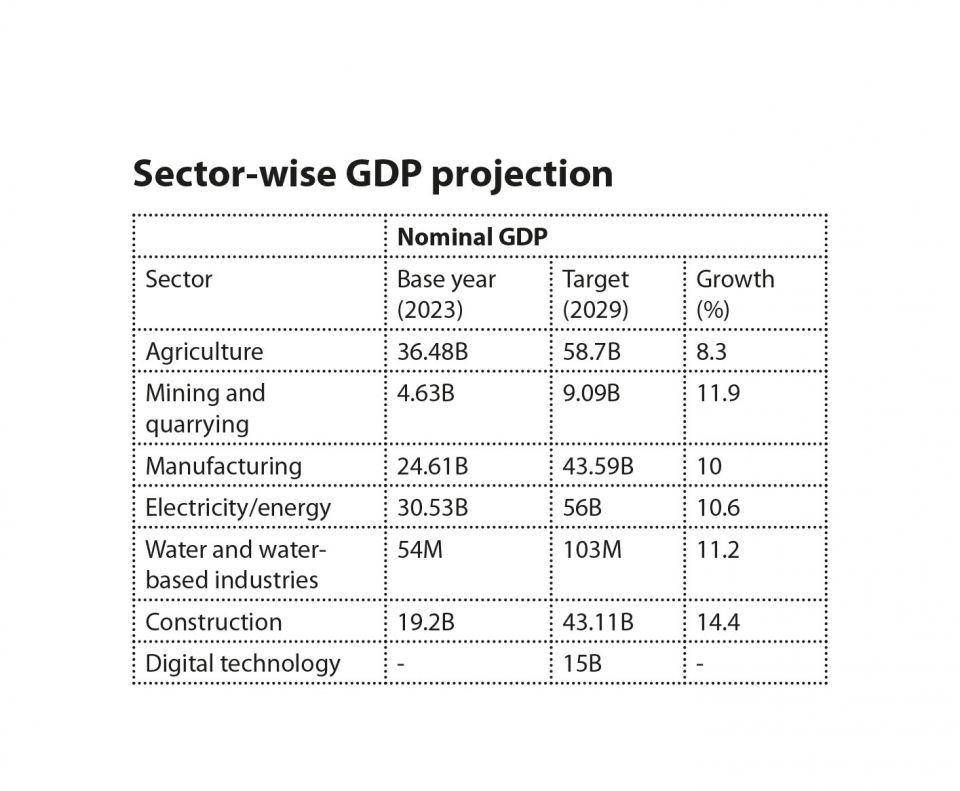
To achieve a USD five billion economy and a gross domestic product per capita (GDP) exceeding USD 6,174 by 2029, the government has projected a Nu 225.59 billion GDP contribution from the identified seven sectors.
This is according to the draft 13th Plan.
Under the Plan, the agriculture sector’s contribution is expected to increase from Nu 36.48 billion in 2023 to Nu 58.7 billion by 2029, with an average growth rate of 8.3 percent.
Similarly, the contribution from the mining and quarrying sector is expected to rise to Nu 9.09 billion from Nu 4.63 billion during the same period, reflecting an 11.9 percent growth rate.

The manufacturing sector’s contribution is projected to grow from Nu 24.61 billion to 43.59 billion, while electricity and energy’s contribution is expected to increase from Nu 30.53 billion to Nu 56 billion.
Water and water-based industries are targeted to contribute Nu 103 million by 2029, up from Nu 54 million. The construction sector’s contribution is set to reach Nu 43.11 billion from 19.2 billion, and the digital technology sector is expected to contribute Nu 15 billion by 2029.
The 13th Plan aims to transform Bhutan into a high-income country driven by innovation and sustainability.
The Plan states that this objective will be pursued through an overarching outcome that seeks to enhance Bhutan’s productivity, diversify its products and markets, and drive sustainable economic growth by 2029.
The economic development outcome will be driven by three national programmes—economic transformation programme, twenty-first century skilling programme, and ecological diversity and resilience programme.
Under the economic transformation programme, the government has allocated Nu 80 billion for close to 76 projects.
The government aims to achieve an economic transformation programme through three key strategies – facilitating private sector development and participation, investing in strategic infrastructure, and investing in traditional growth drivers, as well as new sources of growth.
Private sector development and participation will be facilitated by creating a conducive environment for businesses to thrive and drive economic growth.
This includes streamlining regulations, improving access to finance, promoting entrepreneurship, and enhancing efficiency across sectors.
The government will make investments in strategic infrastructures such as roads, bridges, airports, railways to boost economic development and productivity. This will enhance connectivity, reduce transportation costs, and improve livability of urban settlements.
Investments will be made in traditional growth drivers such as agriculture, hydropower, renewable energy, manufacturing, and digital economy.
The draft Plan also states that the twenty-first century skilling programme will equip the Bhutanese with necessary education and skills for the modern economy. This will be achieved through initiatives in technical and vocational education and training (TVET), tertiary education, skilling, upskilling and reskilling programmes.
Additionally, the ecological diversity and resilience programme will focus on sectors like hydropower, tourism, agriculture, forestry, and water management.
It aims to decouple GDP growth from greenhouse gas emissions, promote eco-friendly practices, and enhance resilience to climate change impacts through community involvement and private sector partnerships.
The draft Plan states that Bhutan achieved rapid economic growth averaging 10.9 percent since the 1980s with GDP per capita reaching USD 3,833.03 in 2022.
However, there has been limited job creation with structural changes in the economy driven largely by public sector investments in hydropower.
The Plan identifies several challenges hindering the country’s economic diversification. These are geographic challenges, inadequate infrastructure, and institutional barriers.
It added that with the persisting challenge of high youth unemployment, Bhutan is facing an increasing out-migration of citizens at prime productive age seeking better economic opportunities.
The Plan also states that economic growth is affected by low productivity across sectors, compounded by high administrative costs and policy hurdles, while market access is constrained by infrastructure limitations and internal and external barriers.
Moreover, the weak private sector has limited the sector’s capacity for expansion and growth.
Bhutan’s capital market remains underdeveloped because of limited access to finance, especially for small businesses, due to collateral-based lending and high borrowing costs.












